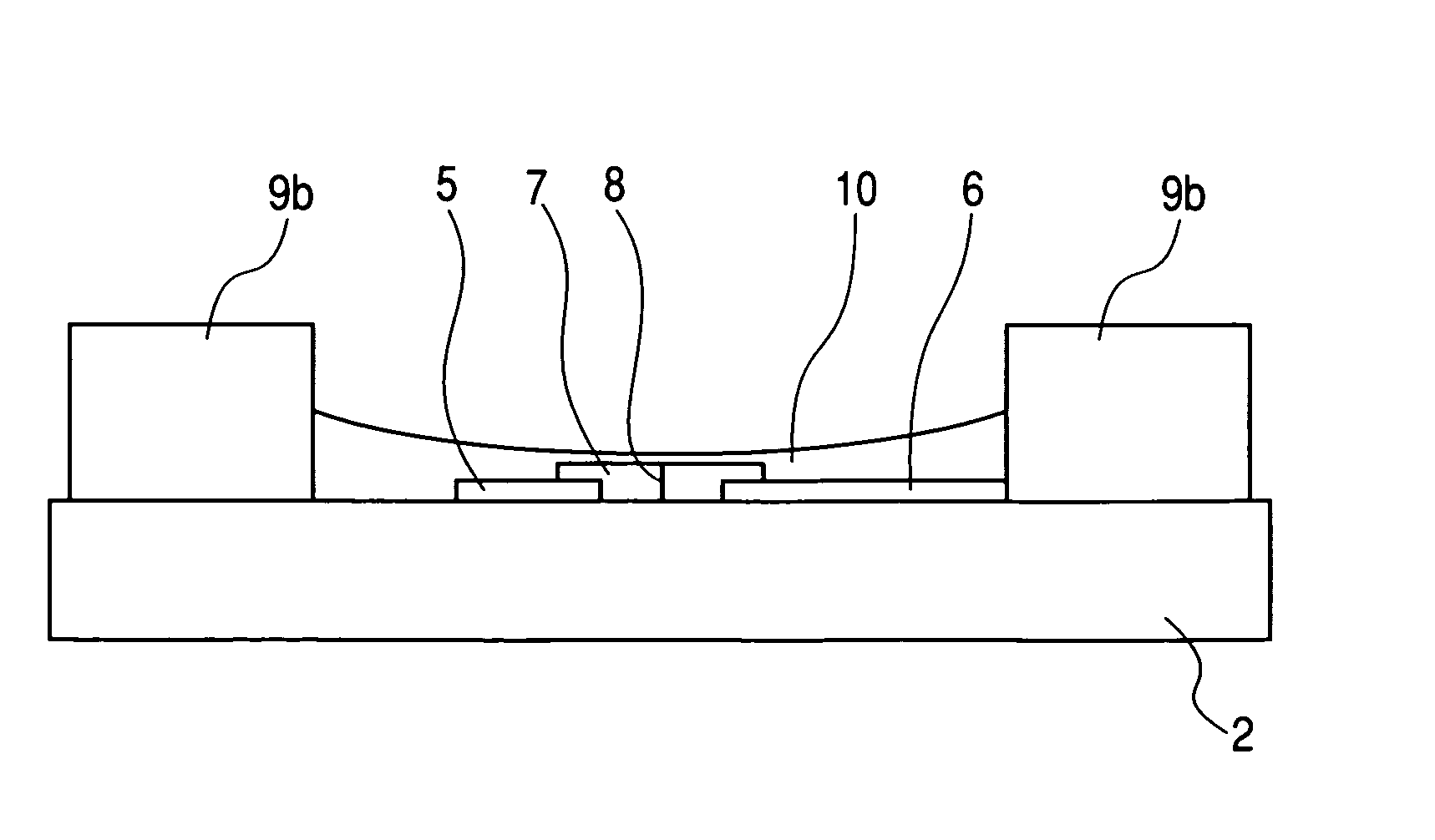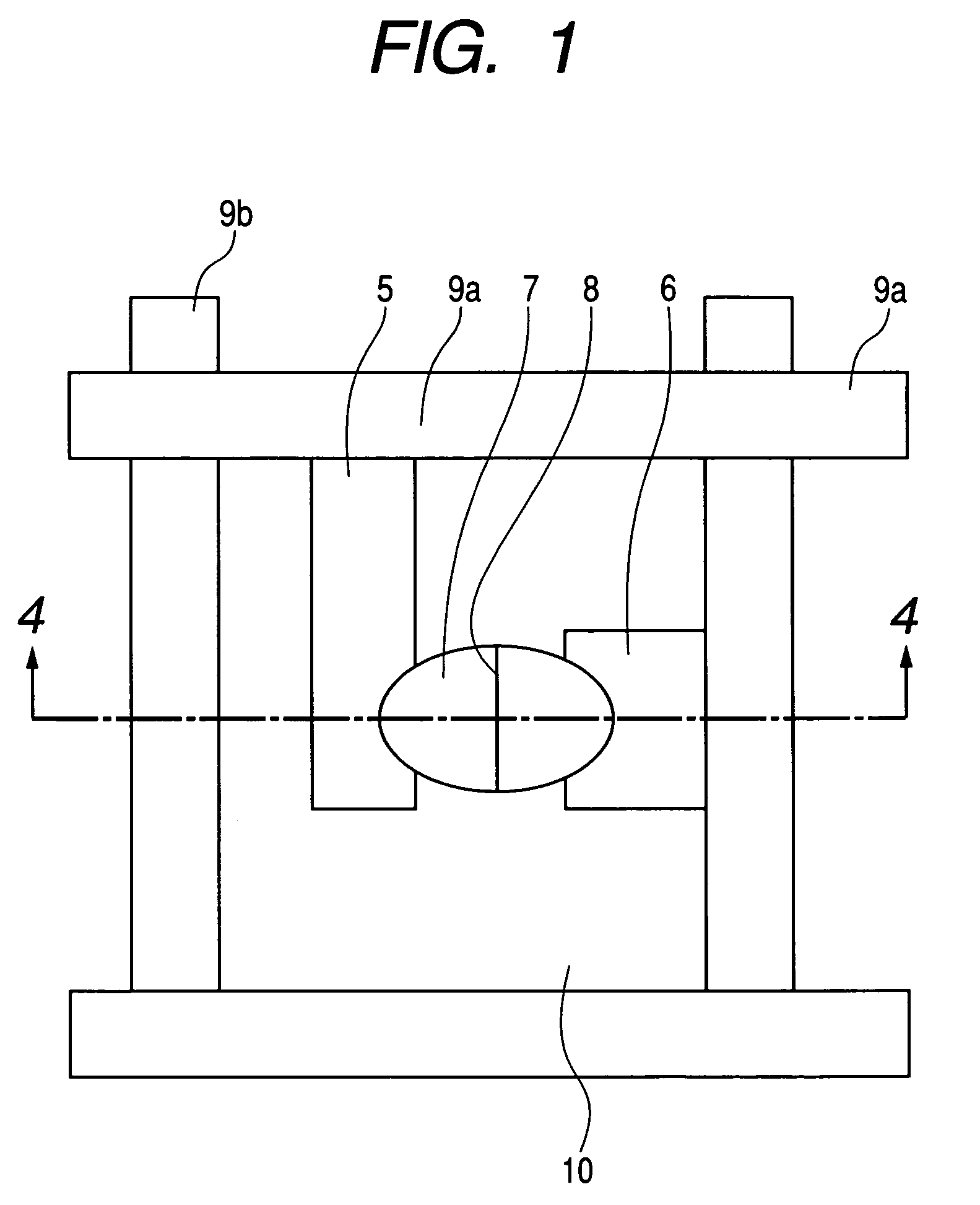Electron source structure covered with resistance film
a technology of resistance film and electron source, which is applied in the manufacture of electrode systems, discharge tube main electrodes, electric discharge tubes/lamps, etc., can solve the problems of increasing the total power consumption of the entire electronic device, increasing the total power consumption of the electronic device, and not being able to prevent the substrate from being charged in sufficient degree. , to achieve the effect of increasing the thickness
- Summary
- Abstract
- Description
- Claims
- Application Information
AI Technical Summary
Benefits of technology
Problems solved by technology
Method used
Image
Examples
embodiment 1
[0028]Hereinafter, description will be made of the present invention by way of more specific examples.
[0029]A plurality of electron-emitting devices each having the same construction as that of FIG. 1 are arranged, as schematically shown in FIG. 2, on a base to constitute a display device. An electron source (denoted by reference numeral 4 in FIG. 2) having plural electron-emitting devices arranged in matrix is manufactured through procedures described below.
[0030]In FIG. 1, reference numeral 7 denotes an electroconductive thin film, and reference numerals 5 and 6 denote device electrodes. Reference symbols 9a and 9b denote X-direction wiring and Y-direction wiring, respectively.
[0031]It should be noted here that an insulating layer is formed in actuality between the Y-direction wiring and the X-direction wiring, but for the ease of understanding the construction, those components are partially omitted in the drawing.
[0032]Next, description is given of a specific manufacturing metho...
embodiment 2
[0078]In Embodiment 2, an electroconductive paste containing silver is used for forming Y-direction wiring, and the number of organic polymer binder compositions is set larger than that of Embodiment 1. This wiring becomes porous after baking and then absorbs low viscosity liquid.
[0079]With such porous properties, when liquid is absorbed until saturation, affinity for the liquid becomes extremely high and thus droplets are not formed on the surface, whereby a surface having the contact angle of substantially 0° is formed.
[0080]In this embodiment, upon coating of the resistance film 10, a concentration of the solution is reduced to half as compared to Embodiment 1, but instead in order that the coating amount per unit area becomes double, the head movement velocity is halved to allow the coating amount to be larger than that the saturation point with respect to the absorbing amount of the wiring.
[0081]Specific conditions are as follows.
[0082]The resistance film 10 is obtained by disp...
embodiment 3
[0093]The same assembly procedures as those in Embodiment 1 are generally performed in Embodiment 3.
[0094]Also, the coating conditions of the resistance film 10 are the same as those of Embodiment 1.
[0095]Before the formation of the resistance film 10, the insulating surface is subjected to hydrophobization processing using tetraethoxyorganosilane (TEOS).
[0096]To be specific, TEOS and the substrate are hermetically set within a chamber to stand for 2 min., thus performing gas phase absorption at a room temperature. After that, organic US cleaning using EtOH is performed for 5 min.
[0097]The contact angle of each section before the formation of the resistance film 10 is as follows.
[0098]
TABLE 4LocationContact angle after cleaning (deg.)Y-direction wiring22.4Insulating section30.7Device electrode28.8Device film29.0
[0099]The coating conditions of the resistance film 10 are the same as those of Embodiment 1, and the assembly after the coating is performed in the same manner as in Embodim...
PUM
 Login to View More
Login to View More Abstract
Description
Claims
Application Information
 Login to View More
Login to View More - R&D
- Intellectual Property
- Life Sciences
- Materials
- Tech Scout
- Unparalleled Data Quality
- Higher Quality Content
- 60% Fewer Hallucinations
Browse by: Latest US Patents, China's latest patents, Technical Efficacy Thesaurus, Application Domain, Technology Topic, Popular Technical Reports.
© 2025 PatSnap. All rights reserved.Legal|Privacy policy|Modern Slavery Act Transparency Statement|Sitemap|About US| Contact US: help@patsnap.com



